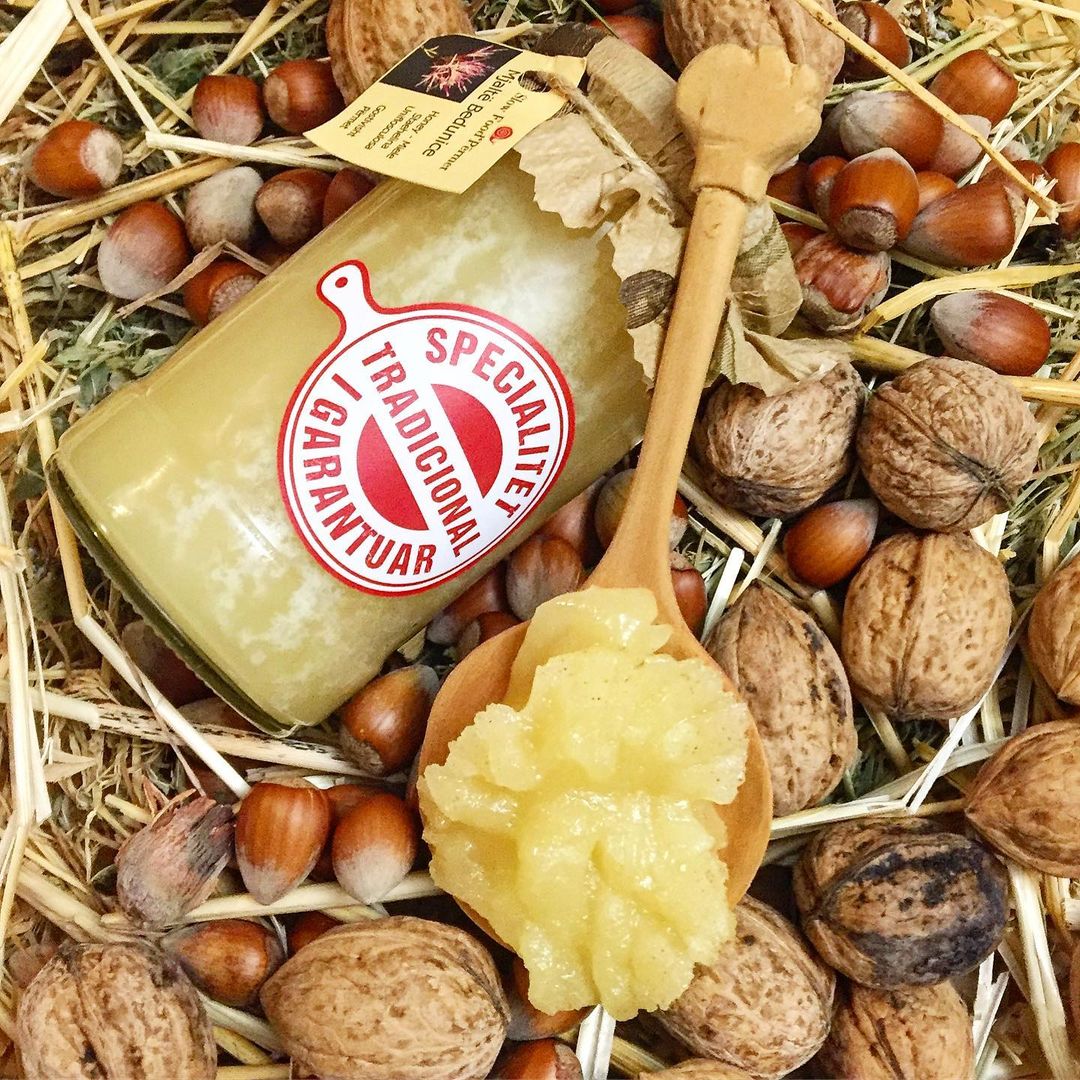
Bee Keeping Techniques
Bees are kept in conventional rectangular wooden hives. The beekeepers practice nomadism, moving their hives from place to place during the summer and early autumn to take advantage of different flowers. The honey is harvested by hand: The honeycombs are uncapped and placed in a hand-powered centrifuge to extract the honey from the comb. Once collected, the honey is placed in stainless steel containers for maturation and then packed in glass jars. The beeswax is used for different purposes.
Bedunica is the Albanian word for the flower Staehelina uniflosculosa; bedunica honey is a monofloral honey from southern Albania, where these flowers are widespread in mountain areas, particularly in the area of Frasheri and Hotova National Park. In this region, beehives are surrounded by bushes and bedunica flowers to facilitate harvesting. The honey is mainly produced by the Carniolan honey bee (Apis mellifera carnica), a subspecies of the Western honey bee, characterized by a dark brown-gray body with light brown stripes. Bedunica honey is considered a late-season honey: The flowers start blooming in mid-August and honey collection begins in October. Bedunica honey has a yellow to greenish color, especially freshly harvested, and a very strong flavor.
Product History
Bedunica honey is used both as food and for medical purposes. It is used to treat liver and kidney infections and is considered a panacea for children. According to local traditional knowledge, bedunica honey can also be used to cure or prevent catarrh in the lungs. This is why it is often served to children, and it is generally consumed in wintertime,
with a spoonful of honey being add to caj malit, the local mountain herbal tea.
Very few families in the area of Frasher, and village of Gostivisht in the Bredhi i Hotovës Dangëlli National Park produce this honey, as most of the bedunica flowers are found in mountainous areas that are difficult to access. Being a lateseason honey, it is usually kept within the household for family consumption, and only seldom found on the market.
Since very few families produce bedunica honey, there is a high risk that the traditional knowledge regarding its production will be lost. Young people are abandoning the country and find no economic interest in producing it. Lack of marketing at local and national levels and the almost complete absence of state incentives for beekeepers have a negative impact
on small-scale beekeeping. It is also noteworthy that locals claim that Carniolan honey bees are much better than the recently-imported Italian bees at harvesting nectar from bedunica flowers. Despite these difficulties, this product could be crucial for the local economy since it is very rare and has important health benefits, and thus fetches a high price.
Source: ‘The Ark of Taste’, Dhurata Thanasi (Luga e Argjendtë)





